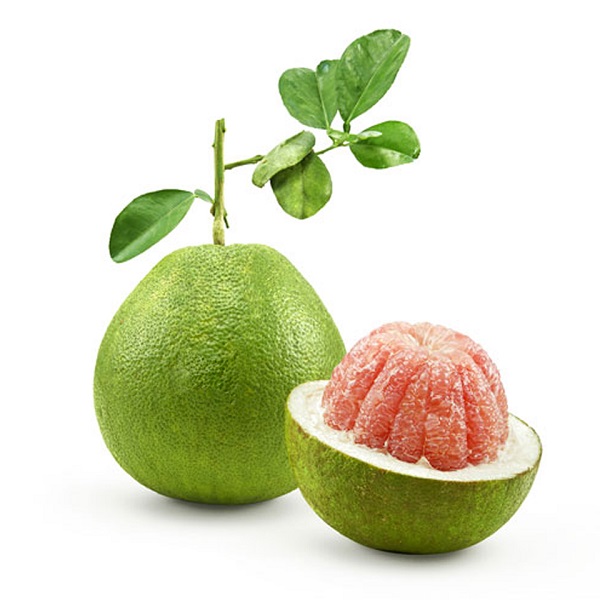Sự phân bố và hiện diện của nấm rễ nội cộng sinh (Vesicular Arbuscular Mycorrhyza) trong vùng đất trồng bưởi da xanh tại Bà Rịa Vũng Tàu
Nghiên cứu do nhóm tác giả Thái Nguyễn Diễm Hương, Nguyễn Thị Mỹ Linh và Phạm Thị Thùy Dương – Khoa Nông học, Trường Đại học Nông lâm TP.Hồ Chí Minh thực hiện.

Nấm cộng sinh Vesicular Arbuscular Mycorrhyza (VAM) là một dạng cộng sinh giữa thực vật bậc cao và nấm. Gần 90% các loài cây trồng trên trái đất có sự tồn tại của nấm cộng sinh. Sự có mặt của nấm cộng sinh trong vùng rễ cây trồng giúp cây trồng tăng tỷ lệ sống cây con, tăng khả năng sinh trưởng và số hoa. Chủng nấm cộng sinh vào cây họ cam quýt đã làm tăng số lượng rễ, chiều dài rễ và thể tích rễ, nhờ đó tăng khả năng hút nước và dinh dưỡng cho cây trồng. Với những lợi ích của nấm rễ cộng sinh như vậy, việc nghiên cứu ứng dụng nấm rễ nội cộng sinh trong nông nghiệp có vai trò nội cộng sinh trong nông nghiệp có vai trò quan trọng trong việc duy trì một hệ sinh thái ổn định và một nền nông nghiệp bền vững, đặc biệt trong điều kiện bất lợi và tình hình khí hậu diễn biến phức tạp như hiện nay.
Nghiên cứu mẫu đất và mẫu rễ thu thập tại vườn bưởi da xanh trên hai nền đất trồng bưởi phổ biến tại địa phương. Cây đang trong giai đoạn nuôi trái (giai đoạn 100-130 ngày đậu trái), khỏe mạnh, 6-7 năm tuổi, thuộc xã Sông Xoài và phường Hắc Dịch, thị xã Phú Mỹ, tỉnh Bà Rịa Vũng Tàu.
Chọn ngẫu nhiên 10 hộ canh tác bưởi da xanh trên các nền đất trồng bưởi phổ biến tại Phú Mỹ, Bà Rịa Vũng Tàu, diện tích trồng lớn hơn 1.000 m2, cây ở giai đoạn cho trái ổn định (6-7 năm tuổi), không bón phân cách thời điểm thu mẫu 7 ngày. Tiến hành thu thập mẫu ở 2 tấng đất: 0-20cm, 20-40 cm; ở vị trí 2/3 tán và mép tán. Lấy mẫu dựa theo TCVN 5297-1995. Trên mỗi vườn thu mẫu, chọn ngẫu nhiên 5 điểm trong vườn theo đường chéo góc, mỗi điểm chọn 1 cây, mỗi cây lấy ở 4 vị trí ở 4 hướng khác nhau, mỗi vị trí lấy mẫu tại 2 tầng đất. Khi thu mẫu, loại bỏ lớp đất mặt 0-2 cm để loại trừ. Xác bã thực vật, dùng xẻng đã khử trùng bằng cồn đào lấy đất ở độ sâu 0-20 cm và 20-40 cm, ở vị trí 2/3 tán và mép tán. Mẫu được đựng vào bao, dán nhãn ký hiệu vùng đất, địa điểm, vị trí, tầng đất lấy mẫu và mang về phòng thí nghiệm ngay sau khi thu.
Mẫu rễ được tách khỏi đất, rửa sạch, loại bỏ các rễ già, hư hỏng, sau đó, cắt rễ từng đoạn dài 1cm và tiến hành nhuộm rễ. Đối với mẫu đất, loại bỏ xác bã thực vật, tiến hành phân lập và đế, số lượng bào tử nấm cộng sinh có trong mẫu thu thập. Mật số bào tử nấm cộng sinh (bào tử/100g đất): đếm số lượng bào tử có trong 100g đất trên kính hiển vi. Việc phân lập bào tử nấm cộng sinh theo TCVN 12560-1:2018 bằng kỹ thuật sàng ướt ly tâm nổi.
Kết quả nghiên cứu cho thấy, trên vùng đất trồng bưởi da xanh tại Phú Mỹ, Bà Rịa Vũng tàu có sự hiện diện của VAM với 2 chi chính là Glomus và Acaulospora. Mật số bào tử VAM và tỷ lệ rễ có sự cộng sinh trên nền đất đỏ cao hơn trên đất đen, tập trung chủ yếu trên đất mặt và ở vị trí mép tán. Độ sâu tầng canh tác càng cao, mật số bào tử càng giảm và thành phần các chi VAM cũng thay đổi.
ctngoc
Tạp chí Nông nghiệp và Phát triển, Đại học Nông Lâm TP.HCM